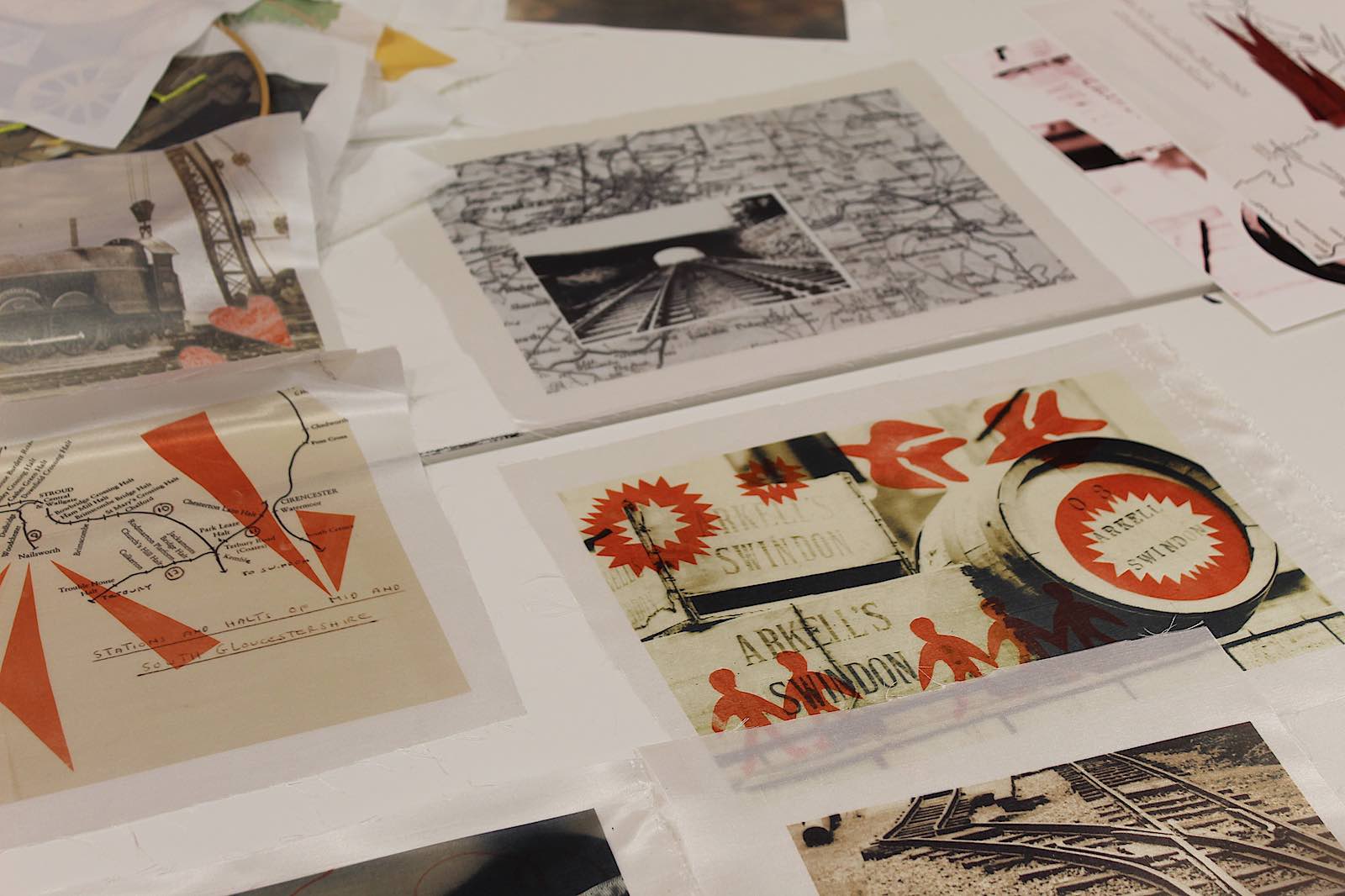
In another exciting open access session, we explored a different technique for creating panels for the Great Train Tapestry: printing photographs onto fabric!
This workshop took place in November at the Hundred Heroines Museum and was led by Harriet Hughes. During the session, participants had the opportunity to explore numerous processes of printing photographic images onto fabric. One process explored was sublimation printing, which uses pressure and heat to transfer ink designs from sublimation paper onto materials. Another method used was poly dye transfer, which makes use of a specialised ink to print photograms of objects onto synthetic fabrics. Participants also explored the cutting of shapes from a dye plate, painting with dye, and experimenting with mark making. The results were a selection of unique and strikingly layered panels.
Harriet is a fine artist whose own work spans multiple mediums, including textile, photography, printmaking, ceramics and papercraft. Her work centres around kitsch imagery, particularly in the form of dolls which mimic the appearance of women. This uncanny mimicry creates a sense of detached femininity, which intends to bring about discomfort amongst viewers and subvert the general preconception that women in art are supposed to appear visibly appealing. She is inspired by the surrealists—particularly Meret Oppenheim, Dorothea Tanning and Man Ray; in addition to the feminist art circle in the 70s, including Judy Chicago, Carolee Schneeman and VALIE EXPORT. She also loves the work of Louise Bourgeois, Tracy Emin, and Marina Abramovic.
Harriet’s 2022 artwork ‘Looks Good, Feels Great’ was created using two different processes taught during the workshop. For this piece, she used photocopy negatives and poly dye to transfer photographs of Vogue models and adverts onto fabric, then used sublimation to overlay an image of scissors which repeated over the whole canvas. After printing, the fabric was stretched over a frame, and the finished work stands at a metre tall. The work was created following research into consumerism and the disproportionate targeting of women in the advertising industry. The motif of scissors stems from an editing practice used prior to digital programming which involved physically trimming printouts of models with scissors to slim them in final print.
Of the workshop, Harriet said: “I was really impressed by the creativity of the participants, collaging archive images of the trains and blocking out areas with selective colour, creating surreal images as panels for the GWR tapestry”.
Are you interested in contributing to the creation of panels for the Great Train Tapestry? We have several upcoming open access sessions, all free to attend and open to women / non-binary identities, which can be viewed on Eventbrite* and our dedicated tapestry page*!
Harriet’s work can be found @harriethughes.art (Instagram).
By Ally Bartley










